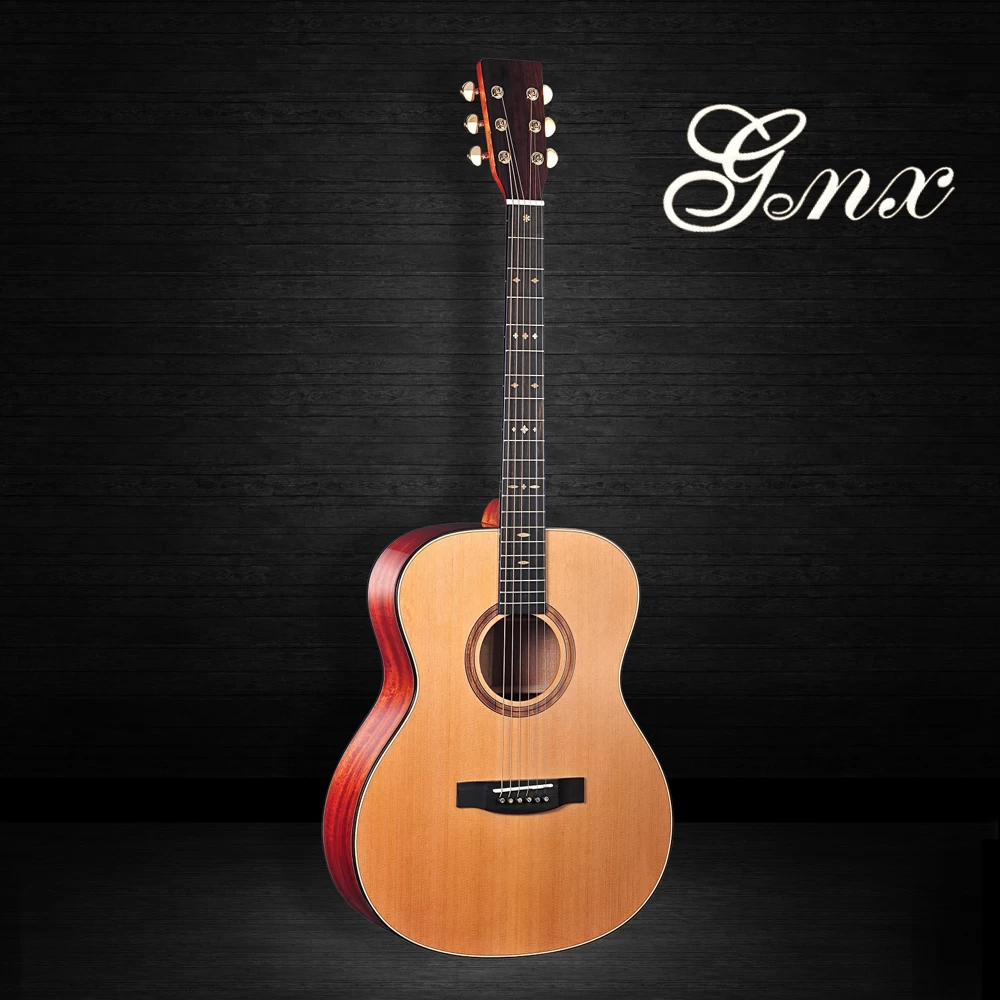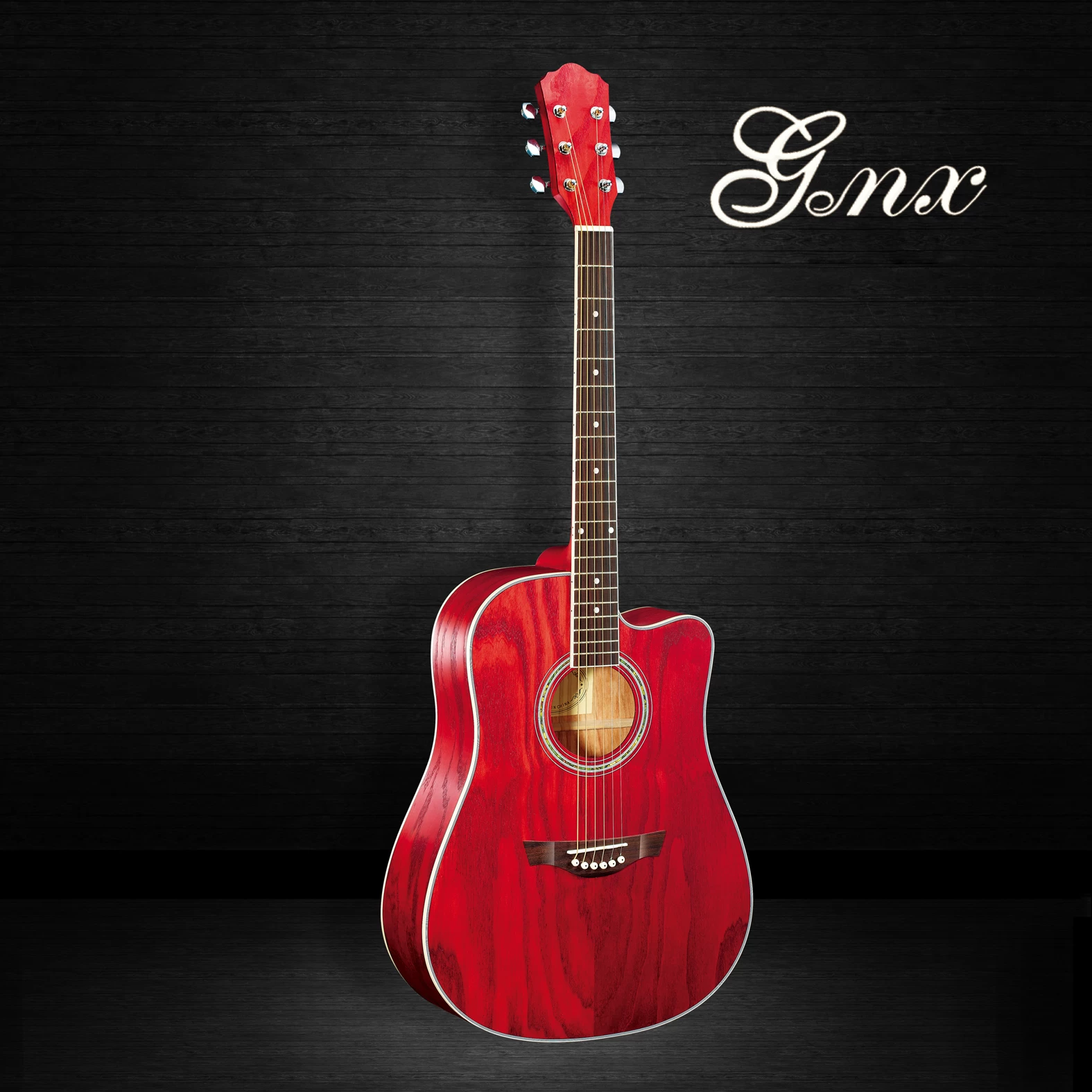SOLID OR LAMINATE TOP GUITARS - WHAT IS THE DIFFERENCE?
2018-05-16 17:46:39
Looking to buy an acoustic guitar can be confusing, the first thing you hear is 'do you want a Laminate or Solid Top Guitar?' So what difference does it make?
It can be confusing.. In this blog I will explain everything you need to know.
The first decision you’ll have to make when you begin to play the guitar is whether to go electric or acoustic and in this situation, acoustic or classical guitars often win out. This is because they tend to be slightly cheaper than electric guitars and you don’t need to spend any extra money on an amp to make them work - you can just pick up an acoustic and start to learn.
In that respect, they are a fantastic starting point, but due to the sheer amount of starter acoustic guitars available and many variants of woods and construction methods used - This choice also comes with a fair few questions and decisions to be made.
When you start to research which acoustic guitar you’re going to get, you’ll begin to see the phrases ‘solid top’ and ‘laminate top’ popping up everywhere and this probably won’t mean much to you - which leads to one of the most commonly asked questions in the store...
‘WHAT IS THE DIFFERENCE BETWEEN SOLID AND LAMINATE TOP GUITARS.'
The ‘top’ of the guitar literally refers to the top of the body of the guitar, where the sound hole is, and the strings cross. This is quite often made from a type of wood called spruce, which is known for giving a bright and powerful sound and is commonly used on guitars ranging anywhere from £100 to £5000.
An acoustic guitar is all to do with resonance and vibration and with wood being the main material used on the guitar, it clearly has a huge effect on how the sound is produced and the quality of that sound.
HOW DOES AN ACOUSTIC GUITAR PRODUCE SOUND?
Here’s a simple explanation:
The strings vibrate, and the vibrations transfer to the saddle (where the strings join the soundboard)
The saddle vibrates and transfers its vibrations to the wooden soundboard.
The soundboard and the body along with the air vibrate and amplify the sound.
The sound comes out from the hole in the soundboard.
Given that the sound and tone that a guitar produces all depend on how well it vibrates - the more resonant a piece of wood it’s made from completely dictates how loud and toneful that guitar is.
LAMINATE TOP
To make a more affordable guitar, then a guitar manufacturer often uses a laminated piece of wood; this is when the soundboard is made up of various layers (of sometimes different woods) all glued together with a thin layer of spruce on the outside.
As you can imagine when lots of layers of something have been glued together there wouldn’t be as much flexibility as just one solid layer of the same thickness. Think of how skateboards are always made up of layers of wood rather than one single piece, this makes them stronger and far less flexible. Great for a skateboard but not so good for an instrument that needs to flex and move.
Although maybe not as resonant, laminate wood guitars can still look and sounds good, plus they are much more affordable than their solid top counterparts. But due to having to be produced on a much tighter budget by suppliers, sometimes aspects can occasionally be skimped on in the set-up process… which means laminate top acoustics can suffer in the playability department when compared to more expensive solid wood guitars. This can, of course, be tweaked and if you are on a budget, they can make ideal guitars to learn on.
SOLID TOP
A Solid top not only resonates more, giving a deeper and more powerful sound but they also age better, becoming more flexible and resonant as time goes on. This makes the solid top guitar the preferred choice for somebody looking for a higher quality sound and an instrument that will last a lot longer.
Also, the back and sides of an acoustic or classical guitar can be made from laminate or solid woods, but that’s a whole other can of wood worm all together.
It can be confusing.. In this blog I will explain everything you need to know.
The first decision you’ll have to make when you begin to play the guitar is whether to go electric or acoustic and in this situation, acoustic or classical guitars often win out. This is because they tend to be slightly cheaper than electric guitars and you don’t need to spend any extra money on an amp to make them work - you can just pick up an acoustic and start to learn.
In that respect, they are a fantastic starting point, but due to the sheer amount of starter acoustic guitars available and many variants of woods and construction methods used - This choice also comes with a fair few questions and decisions to be made.
When you start to research which acoustic guitar you’re going to get, you’ll begin to see the phrases ‘solid top’ and ‘laminate top’ popping up everywhere and this probably won’t mean much to you - which leads to one of the most commonly asked questions in the store...
‘WHAT IS THE DIFFERENCE BETWEEN SOLID AND LAMINATE TOP GUITARS.'
The ‘top’ of the guitar literally refers to the top of the body of the guitar, where the sound hole is, and the strings cross. This is quite often made from a type of wood called spruce, which is known for giving a bright and powerful sound and is commonly used on guitars ranging anywhere from £100 to £5000.
An acoustic guitar is all to do with resonance and vibration and with wood being the main material used on the guitar, it clearly has a huge effect on how the sound is produced and the quality of that sound.
HOW DOES AN ACOUSTIC GUITAR PRODUCE SOUND?
Here’s a simple explanation:
The strings vibrate, and the vibrations transfer to the saddle (where the strings join the soundboard)
The saddle vibrates and transfers its vibrations to the wooden soundboard.
The soundboard and the body along with the air vibrate and amplify the sound.
The sound comes out from the hole in the soundboard.
Given that the sound and tone that a guitar produces all depend on how well it vibrates - the more resonant a piece of wood it’s made from completely dictates how loud and toneful that guitar is.
LAMINATE TOP
To make a more affordable guitar, then a guitar manufacturer often uses a laminated piece of wood; this is when the soundboard is made up of various layers (of sometimes different woods) all glued together with a thin layer of spruce on the outside.
As you can imagine when lots of layers of something have been glued together there wouldn’t be as much flexibility as just one solid layer of the same thickness. Think of how skateboards are always made up of layers of wood rather than one single piece, this makes them stronger and far less flexible. Great for a skateboard but not so good for an instrument that needs to flex and move.
Although maybe not as resonant, laminate wood guitars can still look and sounds good, plus they are much more affordable than their solid top counterparts. But due to having to be produced on a much tighter budget by suppliers, sometimes aspects can occasionally be skimped on in the set-up process… which means laminate top acoustics can suffer in the playability department when compared to more expensive solid wood guitars. This can, of course, be tweaked and if you are on a budget, they can make ideal guitars to learn on.
SOLID TOP
A Solid top not only resonates more, giving a deeper and more powerful sound but they also age better, becoming more flexible and resonant as time goes on. This makes the solid top guitar the preferred choice for somebody looking for a higher quality sound and an instrument that will last a lot longer.
Also, the back and sides of an acoustic or classical guitar can be made from laminate or solid woods, but that’s a whole other can of wood worm all together.









